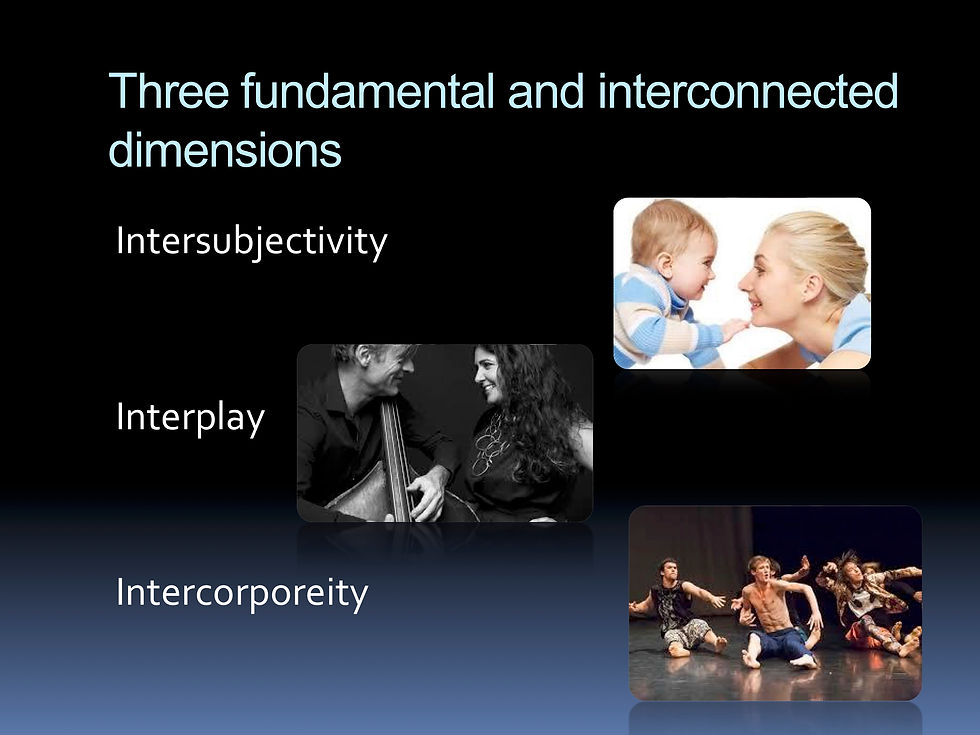
The Midifly System: from play to the interplay, a new road to intersubjectivity
Musictherapy aims to develop the potential and/or residual functions of the persons.
They can better achieve intra- and interpersonal integration and consequently can improve the quality of life thanks to a preventive, rehabilitative or therapeutic process.
There are different approaches to therapy.
MidiFly® represents a new approach to the study of behaviors and possible therapeutic solutions.
In particular, it has been tested in patients with cognitive problems such as autism and others degenerative diseases.
In the music therapy set the midifly is in the center. Patient and operator can interact by acting on the virtual grid.
The grid can be used on both sides. This fact allows users to mirror themselves and start a fruitful sound dialogue.
MidiFly® requires adequate training for its use. At the end of the training the operator receives a Certification that enables him to use Midifly® using the "MidiFly System" protocol.
The "Midifly System" is a protocol created by Dr. Stefano Navone, Dr. Mariangela Lippolis and Dr. Stefano Ianne.
All our tests and studies are performed in our headquarters on Valencia (ES) and in Schio (Italy).
"Midifly technology: a new relational dimension in rehabilitation with music"
(Ianne S. - Navone S. - Lippolis M.)
With the advent of powerful sensor-based computing tools and real-time interactive music systems, gradually more attention has been devoted to combine Music Therapy with sonification, especially in neurological rehabilitation. The basic theoretical assumption of the authors is that the active Music Therapy setting consists in the continuous correlation of three relational dimensions: Interplay as sound interaction, Intercorporeity as body mirroring and Intersubjectivity as sharing emotional states.
The "MidiFly System" conceived by the authors aims to become the technological point of reference for this vision. MidiFly® provides the projection of a virtual infrared screen on which the patient and the therapist, facing each other with simple hand movements, can simultaneously produce predefined sounds while at the same time exploiting body symmetry and mirroring.
The first step was the study of the feasibility and acceptance of this approach in a preliminary clinical investigation with patients with stroke and neglect. We realized that the possibilities of application of MidiFly® are numerous, particularly with patients with acquired brain injuries and motor deficits, taking into consideration the theoretical bases of cross-modal interactions and the spatial representation of pitch height.
Since with MidiFly® the music therapist has the ability to set the composition of the screen in many ways, it also offers the possibility of combining functional rehabilitation and the relational dimension in an integrated and personalized therapy that also focuses on the recovery of motor skills, synchronization and spatial awareness.




The Claudio Ciai Foundation is a non-profit based in Italy that aims to assist with the ongoing support and recuperation of victims suffering brain injuries or permanent disabilities as a result of accidents on the road and/or the workplace. Key goals include:
-
Providing a toolkit of valuable information and resources for families and friends, following four years of intense research and trial-and-error to find a cure and the most humane care possible for Claudio;
-
An information center sourcing and sharing news about innovative research, new technologies, hospitals and assistance centers in Italy and other countries across the globe. Assistance in understanding victim rights and associated compensation as well as financial support from the foundation as available and needed for victims in need;
-
Act as a helping hand and empathetic guide in moments when tragedy strikes to help families and friends of victims identify best solutions and next steps in moments of need, particularly when a loved one is still alive but without the ability to be autonomous.
The foundation is born from the reassurance that even the woes of sadness and suffering can be transformed into a positive energy of love and kindness, providing a beacon of hope for those in need in their darkest moments.







